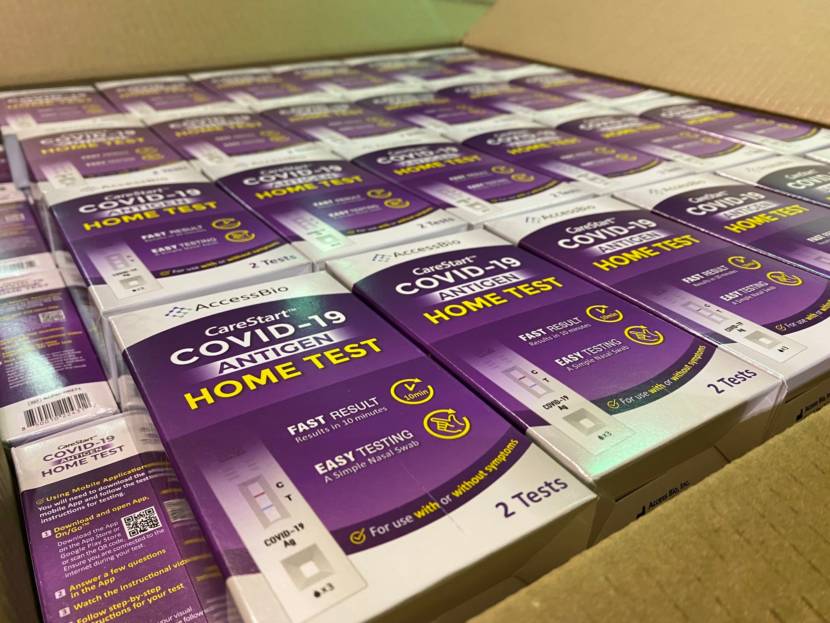
State health officials say there’s a lot of COVID-19 circulating in Alaska, and like the rest of the country, that’s predominantly the coronavirus’s omicron BA.5 subvariant.
Hospitalizations in Alaska have been on a mostly upward trajectory since April, as have case counts. That’s even with more people using at-home tests, the results of which aren’t reported to the state.
Still, state epidemiologist Dr. Joe McLaughlin says vaccinations and boosters — including a second booster available to anyone immunocompromised, and those 50 and up — are helping stave off infections or minimizing serious illness.
And McLaughlin says, even with COVID-19 on the upswing again, people are better protected and there are better treatments than when the pandemic started more than two years ago.
Listen:
The following transcript has been lightly edited for clarity.
Joe McLaughlin: It’s best to get started on those medications as soon as possible after you test positive. So if you woke up this morning feeling sick, and you have a home antigen test, go ahead and test yourself. And if you test positive, go ahead and contact your healthcare provider. Now, if you don’t have a primary care provider, there are other options. You can go into an urgent care if you’re in an urban setting. If you’re in a more rural setting, you could go in and contact a public health nurse who might be able to help link you to a provider and link you to treatment if treatment is warranted for you. Or if you’re in a village, you can contact a health aide and try and set up either a telemedicine visit or some other sort of visit where you can, you know, talk with the health aide about your symptoms, and they can take a look at your risk factors and whether or not you’re eligible for treatment.
Casey Grove: Whether you’re looking at those test results or hospitalizations, and you see an increase here, just recently over the last few weeks, how does that compare to previous waves that we’ve seen? Or would you even call this a wave? And do you have any sense of how this might play out?
Joe McLaughlin: So if you look at the COVID-19 hospital dashboard, going back, from our first big wave that occurred in sort of November, December of 2020, the biggest wave that we had was, you know, the winter of 2021, going into, starting to go into, 2022. But then in January 2022, we had another big wave. And then now this omicron wave that we’re experiencing, is not as big in terms of the amplitude. It’s not as high in terms of number of hospital beds occupied per day. So that gives you a sense for the hospitalization burden associated with this omicron wave that we’re experiencing. It’s not as high as we’ve seen with the other variants. What does that translate to, in terms of cases? How many cases we’ve seen? That’s a little bit more difficult to answer, because, again, we just don’t have the surveillance data on cases like we used to. But right now, our biggest concern is hospitalization and deaths associated with COVID, and fortunately, the death rate is remaining very low.
Casey Grove: It strikes me that to become infected now, two-plus years into this pandemic, as you mentioned already, there are a lot of other treatments that we didn’t have a couple of years ago. And I wonder if you could tell me about that, and what impact that’s had on numbers nationally and in an Alaska.
Joe McLaughlin: So there are a number of factors that are contributing to our lower hospitalization rates and probably our lower death rates as well. Number one is just the particular variants that are circulating right now might be less virulent than previous variants like the delta variant. Remember that was very virulent and we saw very high hospitalization and death rates associated with that Delta variant. The other thing is, most Alaskans have had at least one or two doses of vaccine. And we know that prior vaccination does decrease the risk of hospitalization and death, even with the omicron strains that are circulating. And also there have been a number of Alaskans who have had prior infection. And again, prior infection like prior vaccination is protective against more severe cases.
Casey Grove: Well, Dr. Joe, when will the pandemic be over? I think maybe people want to know that.
Joe McLaughlin: I wish I had a crystal ball on that one. I don’t know. You know, what we’re doing is we’re just trying to take this one step at a time and deal with the various waves that are coming up. This is a virus that is not going to go away. We are going to continue to see the SARS-CoV-2 virus circulate in human populations for the foreseeable future, globally. And as we’ve seen with influenza, like the great pandemic of 1918-1919, when we saw the H1N1 influenza virus emerge in human populations and really cause a massive pandemic with high death tolls, that H1N1 virus is still circulating in human populations. Now, it’s much more attenuated. We have much lower hospitalization and death rates now associated with that H1N1 virus than we saw during the 1918 pandemic. But it is still circulating, and I suspect that’s what’s going to happen at some point with this SARS-CoV-2 virus, is we are going to see one or more strains that will just continue to circulate in human populations. And it may be that we will continue to see new variants emerge like we do with influenza from year to year that we’re going to have to manage. And our treatments will continue to improve and our ability to stave off more severe infection will continue to improve. And hopefully, the virus strains that circulate over time will become more attenuated and be less capable of causing severe disease, as we’ve seen with many of the influenza variants that have emerged over the years.



